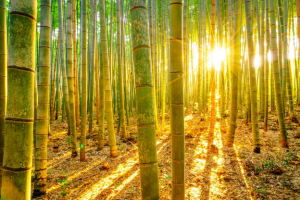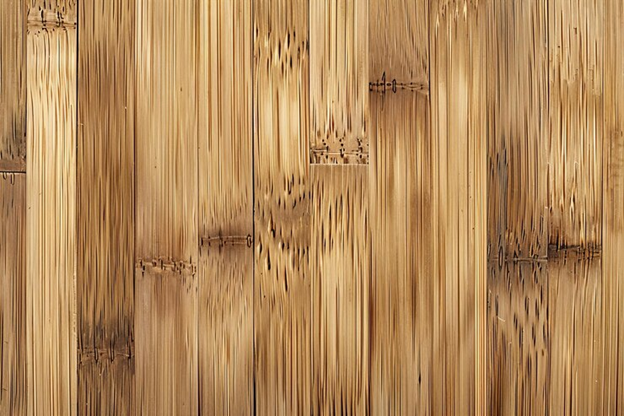Bamboo flooring has become increasingly popular in recent years due to its combination of durability, aesthetic appeal, and eco-friendliness. For homeowners and designers looking for a sustainable option that doesn’t compromise on style, bamboo offers the perfect solution. In this post, we’ll explore the benefits of bamboo as a flooring material, examine different types of bamboo flooring products, and provide some practical tips for installation and maintenance.
What Makes Bamboo a Sustainable Flooring Choice?
When considering flooring options, sustainability is a crucial factor for many environmentally conscious homeowners. Bamboo stands out because of its rapid growth rate. Unlike traditional hardwoods, which can take decades to mature, bamboo reaches full maturity in just 3 to 5 years. This fast-growing grass regenerates quickly after harvesting, making it a highly renewable resource.
Furthermore, bamboo requires fewer pesticides and fertilizers compared to other crops. It helps reduce soil erosion and sequesters carbon, playing a small but vital role in combating climate change. By choosing bamboo flooring products, such as ones by Ambient, homeowners can make an environmentally responsible decision that contributes to a healthier planet.
The Strength and Durability of Bamboo Flooring
One common misconception about bamboo is that it might not be as durable as traditional hardwood. However, bamboo is incredibly resilient. High-quality bamboo flooring can be just as strong, if not stronger, than oak or maple. This strength makes it an excellent choice for high-traffic areas like living rooms, hallways, and even kitchens.
The durability of bamboo comes down to the manufacturing process. Strand-woven bamboo, one of the most popular types, is made by shredding bamboo fibers, then pressing them together under extreme heat and pressure. This results in a material that is incredibly tough and scratch-resistant, often outperforming hardwood in terms of resistance to wear and tear.
Types of Bamboo Flooring: Which Is Right for You?
There are several types of bamboo flooring to choose from, each with its own unique characteristics. The three main categories are:
1. Solid Bamboo Flooring
Solid bamboo planks are made entirely from bamboo strips. This type of flooring is more natural in appearance and can be refinished multiple times, making it a long-lasting option for homeowners. It tends to look and feel more like traditional hardwood, but with the added benefits of bamboo’s environmental credentials.
2. Engineered Bamboo Flooring
Engineered bamboo consists of a thin layer of bamboo on top of a plywood or fiberboard base. While it cannot be refinished as many times as solid bamboo, engineered bamboo is more stable in areas with fluctuating humidity, such as bathrooms or basements. It’s a great option if you’re seeking the look of bamboo without worrying about potential warping.
3. Strand-Woven Bamboo Flooring
As mentioned earlier, strand-woven bamboo is made by compressing bamboo fibers, resulting in an incredibly strong and dense material. This type of flooring is ideal for high-traffic areas due to its extreme durability. Additionally, strand-woven bamboo often features a beautiful, distinct grain that adds visual interest to any room.
Bamboo Flooring Styles and Finishes
Bamboo flooring offers more versatility than you might think. Whether your home has a modern, minimalist aesthetic or a cozy, rustic feel, bamboo flooring can complement any interior design style. Some popular styles and finishes include:
- Natural Finish: The light, natural hue of bamboo offers a fresh, clean look that brightens up any space. It’s perfect for those seeking a modern, Scandinavian-style interior.
- Carbonized Finish: Carbonization is a process where the bamboo is steamed to darken its color. This results in rich, warm tones that mimic the look of darker hardwoods like walnut. Carbonized bamboo adds a sense of sophistication and depth to a room.
- Distressed or Hand-Scraped Finish: For homeowners looking for a more rustic or antique vibe, hand-scraped bamboo planks provide a textured, lived-in look. The distressed finish enhances the natural imperfections of the bamboo, giving it a charming, weathered appearance.
Installation Methods: What You Need to Know
Bamboo flooring can be installed in a variety of ways, depending on your preference and the type of subfloor. Here are some common installation methods:
- Nail-Down Method: This is a traditional installation method where bamboo planks are nailed directly to a wooden subfloor. It’s a sturdy and secure option, but it does require professional expertise.
- Floating Floor Method: This method involves snapping planks together over a foam underlayment, without any nails or glue. It’s a popular DIY-friendly option and works well for engineered bamboo flooring.
- Glue-Down Method: For concrete subfloors, the glue-down method is ideal. The planks are adhered directly to the subfloor using a specialized adhesive. This method provides stability and reduces noise underfoot.
Whichever method you choose, it’s essential to acclimate the bamboo planks to the room’s temperature and humidity before installation. This helps to prevent warping or expansion after the flooring is laid.

Maintenance Tips for Bamboo Flooring
Bamboo flooring is relatively low-maintenance, but it still requires some care to keep it looking its best. Regular sweeping and vacuuming will help prevent scratches from dirt and debris. Avoid using harsh chemicals or steam mops, as these can damage the finish of the bamboo.
For spills or stains, a damp cloth with a mild cleaning solution should do the trick. Be sure to wipe up any moisture immediately to prevent water damage. Over time, if your bamboo flooring begins to show signs of wear, refinishing is an option—particularly for solid bamboo.
It’s also worth noting that bamboo flooring is sensitive to excessive humidity and moisture. Using a humidifier in dry seasons and protecting it from direct sunlight can help maintain the longevity of the material.
The Cost of Bamboo Flooring: Is It Worth the Investment?
One of the main draws of bamboo flooring is its affordability compared to traditional hardwood. While the cost varies depending on the type of bamboo and the installation method, bamboo flooring is typically less expensive than oak or maple, yet offers similar durability and aesthetic appeal.
When calculating the total cost, don’t forget to factor in the installation method and any additional underlayment or materials needed. While bamboo is a cost-effective option, investing in high-quality bamboo flooring products ensures that you get the most value for your money.
Bamboo Flooring: Pros and Cons
To wrap up, let’s take a quick look at the pros and cons of bamboo flooring:
Pros:
- Eco-friendly and sustainable
- Durable and resistant to wear
- Available in a variety of styles and finishes
- Affordable compared to traditional hardwood
- Easy to install with various methods
Cons:
- Sensitive to moisture and humidity
- Limited refinishing options for engineered bamboo
- Some lower-quality bamboo products may not be as durable
Bamboo flooring is an excellent choice for homeowners who want to balance sustainability, style, and durability. With its wide range of options and finishes, bamboo can complement any interior design while offering an eco-friendly alternative to traditional hardwood. Whether you’re remodeling a modern apartment or renovating a rustic home, bamboo flooring products provide a versatile and affordable solution for any space.
By choosing bamboo, you’re not only investing in a beautiful and long-lasting material but also making an environmentally conscious decision that benefits the planet.

Recent Comments